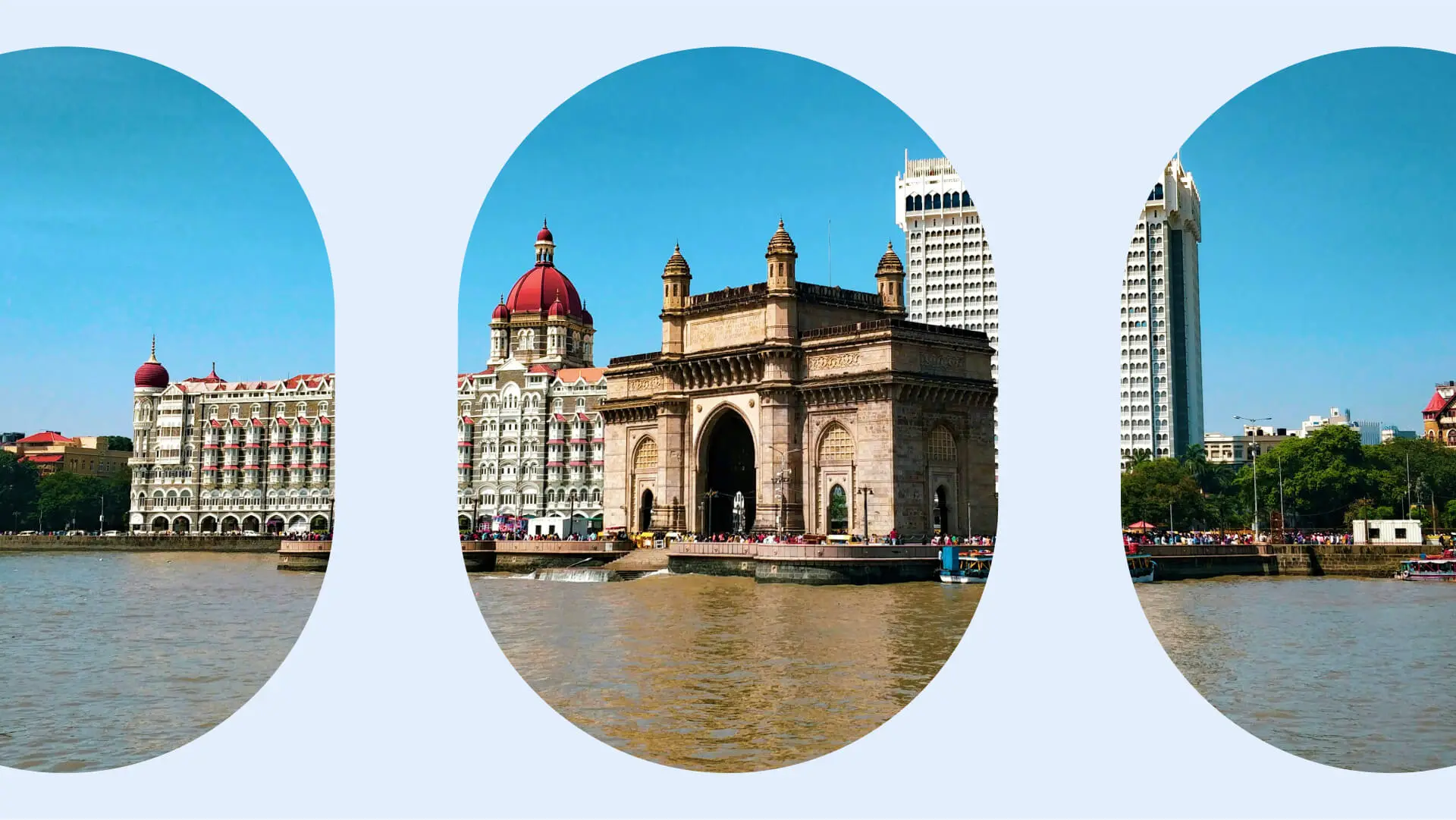India is sometimes known as the “Land of Diversity”–and for good reason. India is a tapestry of traditions, languages, and religions, as well as the world’s largest democracy. It’s a place where ancient customs and modern progress coexist, making it both a fascinating part of the world to witness and a source of incredibly dynamic workers.
With a population exceeding 1.3 billion people, India is the second-most populous country in the world. It’s home to an array of traditions, languages, and cuisines that reflect its multicultural essence. The country boasts hundreds of dialects, numerous religions, and countless festivals.
India’s talent specialty is multi-faceted, ranging from technology to arts and culture. The country is renowned for its IT industry, producing some of the world’s leading engineers and tech entrepreneurs. Moreover, India has a rich artistic heritage, with globally acclaimed cinema (including Bollywood and other film-making locales), music, dance, and visual arts.
In terms of work culture, India typically follows a six-day working week, with Sunday being the universal day off. However, with the influence of western culture and multinational companies, many corporations have now adopted a five-day workweek.
The benefits of doing business in India
India doesn’t require much explanation–its strengths being self evident–but we’ll have a go anyway! India is a global powerhouse in numerous industries, with the pharmaceuticals, software and services, and FMCG (Fast-Moving Consumer Goods) sectors just a few of the most significant players in India’s economic landscape (not to mention the largest sources of billionaires!).
In terms of talent specialty, one area to watch is the chemicals industry. According to McKinsey, strong performance in the sector is positioning India as a preferred manufacturing hub for both domestic and international markets. It’s worth noting that the software and IT industry is an important employment generator in the country. Little wonder, then, that India‘s IT and business services market is projected to reach $19.93 billion by 2025.
By the way, if you’re wondering how you can get your hands on that specialty talent, look no further than our competitive global employment platform, which features country-specific pricing so you can be sure to get the best deal whether you’re hiring in India or beyond! What’s more, the Multiplier platform makes the process effortless, with contract generation possible in under five minutes (seriously, we’ve timed it).
Other nuances for businesses to note when hiring in India include the construction of attractive compensation packages. It’s crucial to get this right as offering the right employee benefits enhances retention, job satisfaction, and facilitates the attraction of top-notch Indian talent.

We’ve still only scratched the surface of reasons to engage in India. Here are three takeaways you need to understand about the Indian workforce.
- Large Workforce: India has a vast workforce with approximately 523 million workers as of 2022, making it the second largest after China. This large pool of labor offers businesses a wide range of potential employees to choose from, catering to various sectors and skill sets.
- Youth in Numbers: India’s population is young, with a median age of 29 compared to 38 in China and the US. India’s population is also forecast to grow over the next few decades, boosting the economy thanks to the number of working-age people.
- Women’s Participation: Women’s participation in India’s workforce has traditionally been low, with women making up only 25% of the total workforce. However, there has been a recent increase in female labor force participation, rising to just under 33% following the Covid pandemic. This trend indicates a potential shift in societal attitudes towards women’s employment, opening new opportunities for businesses to engage with a more diverse talent pool.
How does that sound? We know this is a lot of information to take into consideration. That’s why at Multiplier we pride ourselves on offering dedicated, 24/5 support tailored to specific countries–so you can sit back and relax in the knowledge that the professionals have things under control.
Now you’re speaking their language
Picture this scenario: you’ve hired and onboarded talent from India, and now you’re wondering what makes them tick. Consider these tips for effective communication with your Indian colleagues, starting with the stuff that helps no matter where they’re based:
- Clear Communication: Clearly communicate job expectations, company culture, and goals to ensure alignment. Regular check-ins and feedback sessions can help keep everyone on the same page.
- Leverage Technology: Use technology to facilitate collaboration and communication. Tools like Slack, Microsoft Teams, or Trello can help manage projects effectively.
- Integration: Make efforts to integrate remote workers into the company culture. Virtual team-building activities or occasional in-person meetings (if possible) can foster a sense of belonging.
- Legal Compliance: Ensure all employment contracts and practices comply with Indian labor laws, even when hiring remotely. Luckily, with Multiplier, our easy-to-use platform ensures compliance is guaranteed, with automatic contract generation that dots the Is and crosses the Ts.
But if there’s one thing more likely to endear you to an Indian colleague than any other, it’s this: Cricket. Undoubtedly the most followed sport in the country, with a large fanbase and significant national success, 62% of Indians define it as the most popular sport in the country. Of course, that’s not to say that other games like kabaddi, badminton, tennis, field hockey, and athletics don’t also hold a special place in the hearts of many Indians.
If you’re not getting through with sport, try pivoting to India’s other great past-time: culture. The country’s cultures are greatly influenced by its historical civilizations, including the Indus Valley Civilization, the Vedic civilization, and the advent of major empires like the Maurya, Gupta, Mughal, and British. These influences have shaped India’s socio-cultural fabric, making it one of the most culturally diverse countries globally. Indeed, there is so much diversity in India that there’s little point in identifying one cultural lodestar; only by finding out specifically where your colleague is from can you start zeroing in on what they might be into!
Speaking the truth
Of course, if you really want to impress your new hire, you could try picking up some Indian terminology. As with everything in India, there is tremendous diversity in language, with 23 official languages (including English) and many lesser spoken tongues. Hindi has the largest number of first-language speakers, so let’s take a look at a couple of common phrases in that, beginning with greetings. In India, the originally sanskrit term “Namaste” is a common way to say both hello and goodbye. Other ways of saying goodbye in Hindi include “Alvida” and “Phir milenge“, which translate to “Goodbye” and “See you again”, respectively.
In the workplace, Indians often use English terminology due to the widespread use of English in business and official communications. However, there are some Hindi terms that might be used, such as “Kaam” for work, “Daftar” for office, and “Sahayak” for assistant.
As for tech terminology in the IT powerhouse that is India, much of it is borrowed from English due to the global nature of the tech industry. As a result, you’re not going to have any problems asking your Indian colleague to “message me on Slack”, or “meet on Zoom.” Phew!
Did you know?
Now that we’ve got the serious business out of the way, let’s have a quick look at some India fun facts.
India’s history dates back to one of the world’s earliest civilizations in the form of the Indus Valley civilization, which flourished around 5000 years ago. Subsequently, it has been home to many influential dynasties, including the Gupta Empire in the 4th to 6th centuries CE that ruled over a “golden age” for the territory.
While India has given birth to many prominent figures who have left their mark on history, Mahatma Gandhi is perhaps the best known today. Known as the ‘Father of the Nation’, he led the country to independence from the British empire through his philosophy of nonviolent resistance, subsequently influencing civil rights movements worldwide.
It’s fitting that the cuisine of India is as diverse as its culture and history. Each region in India has its unique culinary tradition, often characterized by a sophisticated use of spices and herbs. The staple foods in the diet include rice, wheat, and lentils—indeed, Indian cuisine is also known for its large assortment of vegetarian dishes due to cultural and religious beliefs.
Hungry for more India info?
We’ve got you covered! So far we’ve talked about the big picture, but our talent wiki page contains all the nitty gritty information you need to make your India hiring plans an astronomical success. Click the link for details on statutory leave, public holidays, talent sourcing locations, and much, much more!
Taxes:
- Employers must contribute 15.25%, consisting of EPF + EPS at 12%, and ESI at 3.25%
Employee benefits:
- Employee Provident Fund (EPF)
- Employee Pension Scheme (EPS)
- Employee State Insurance (ESI)
- Maternity leave
Visa requirements:
- Foreign employees in India must secure a work visa to legally work in the country. The visa’s validity may vary from 6 months to 5 years.

Make international employment possible with Multiplier
And that’s the lowdown on hiring in India. Now you’ve heard the benefits, make your dreams a reality with Multiplier. We’re here to help businesses boost their productivity with exceptional global talent, whether from India or anywhere else!
Our presence in over 100 countries worldwide showcases the breadth of expertise we possess. Multiplier is a one-stop solution for all your global hiring needs, so why not talk to our experts and book a demo today?







